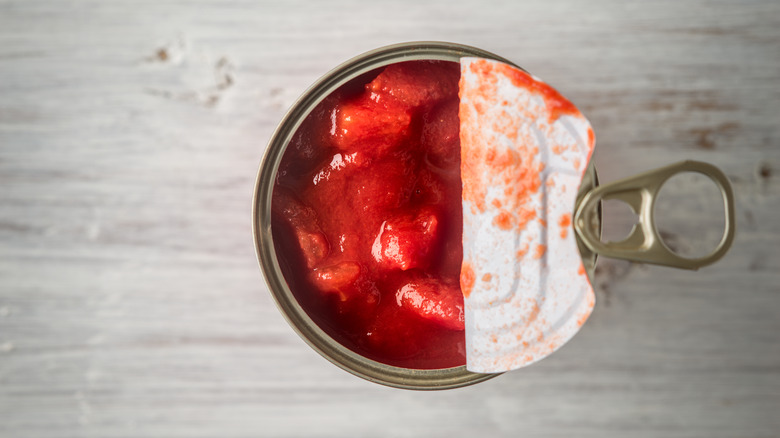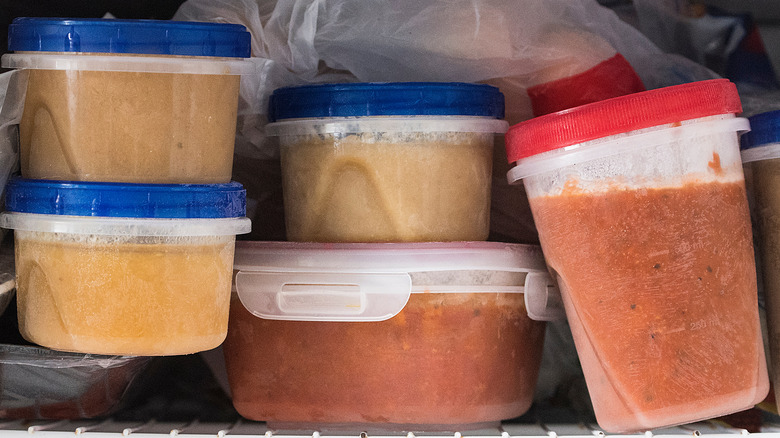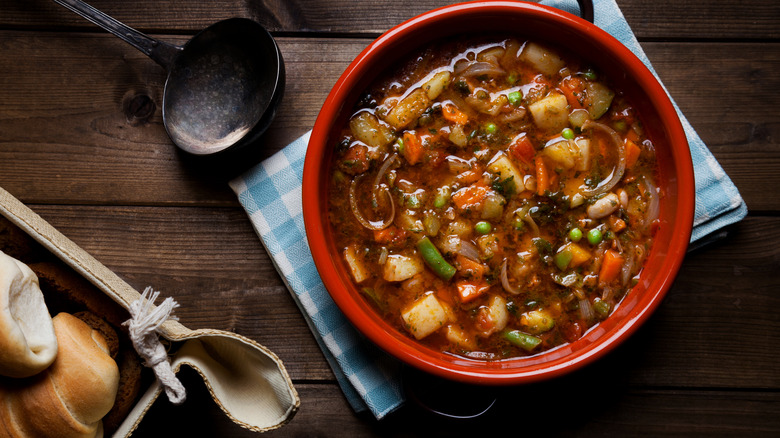The Easiest Way To Store Leftover Canned Tomatoes Isn't In The Fridge
For those times when you've misjudged a recipe for pasta sauce and simply had too much canned tomatoes for the job, it can be tempting to take shortcuts when cleaning up, like simply throwing the remaining amount away or storing it in the fridge. But, there's a better way to store leftover canned tomatoes that's even easier and more economical: Use the freezer.
Unlike the fridge, where cool temperatures will prolong the quality of canned tomatoes for only a short period of time, the freezer gives cooks a cushion of up to a year to decide how to repurpose the extra fruit. Crushed, diced, and whole tomatoes are all perfectly suited to this environment and although technically they won't go bad after 12 months, their quality will start to decline.
Whether it's considered frugal or altruistic, saving leftovers from the trash helps you get more bang for your buck and reduces food waste, too. Repurposing extra tomatoes and other ingredients helps reduce emissions from landfills and ultimately lowers your carbon footprint. But best of all, doing so ensures you have extra amounts of the pantry staple whenever you need it.
How to best store canned tomatoes in the freezer
To preserve the quality of canned tomatoes, or really any ingredient headed for the freezer, make sure it's in the right vessel that can be fully sealed. For example, your old cream cheese container may be the perfect size, but it's not going to provide an airtight seal. When frozen food is exposed to air, it can dry out, develop bad flavors, and get freezer burn. Using resealable plastic bags, reusable containers, or glass jars are better ideas for this reason.
Liquids like those in canned tomatoes can also expand when they're frozen, so make sure to leave room at the top of the jar. This gap is called headspace, and experts recommend leaving between a half-inch to 1 inch for widemouth jars depending on their size. If you forget and your glassware cracks in the freezer, be sure to toss the ingredient altogether.
While it's easiest to store canned leftover canned tomatoes in the freezer, cooked fresh tomatoes can handle the chill, too. And, although it's possible to do the same with raw tomatoes, they will become mushy after defrosting, so we suggest blanching and peeling them before you inadvertently make popsicles.
Using frozen ingredients in your recipes
Whether you're testing out the best basic tomato sauce recipe or riffing on your tried-and-true minestrone, defrosted canned tomatoes can hold their own whenever you're ready to use them. Their texture may become softer or more watery after this time in storage, but their taste will remain unchanged. This makes them especially well-suited for slow-cooked meals like chili or bolognese, where any extra liquid will cook away in the pot.
When you're ready to put the leftovers to use, allow the frozen tomatoes to defrost overnight in the fridge. If you're short on time, you can also thaw the ingredient in the microwave or even add it directly to your recipe. Just don't microwave glass jars, however, as they can shatter.
Many other leftover ingredients hold up to the same subzero treatment, including liquids like stocks, broths, and wines, as well as butter, Parmesan rinds, and tomato paste. You can even store fresh pasta in the freezer. As you keep freezing, experiment with pre-portioning smaller amounts in ice cube trays for easy use. But before you close the door on your leftovers, date and label your containers to stay organized.



